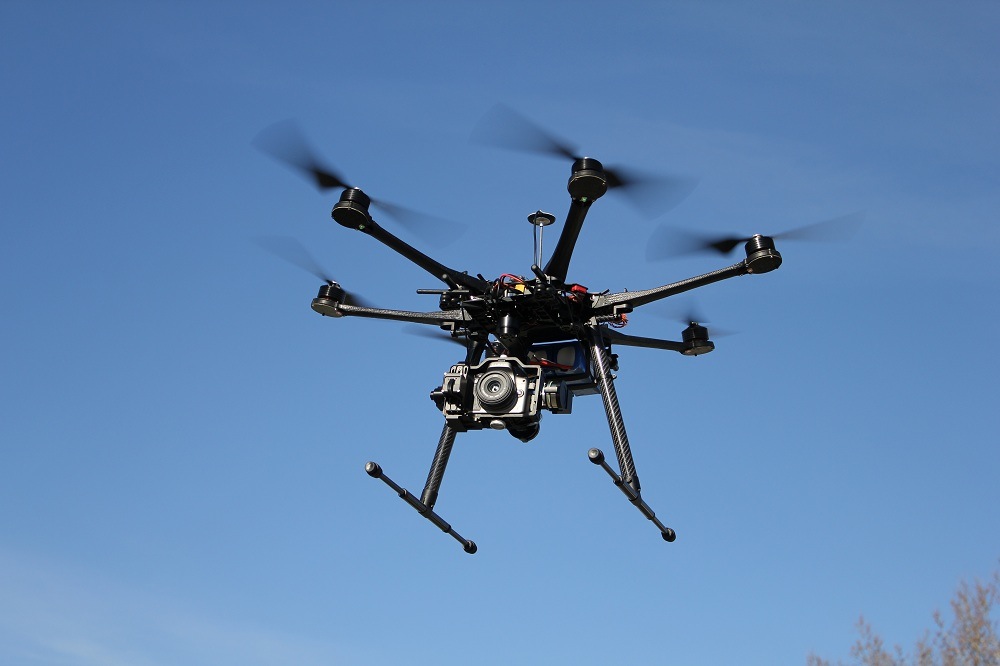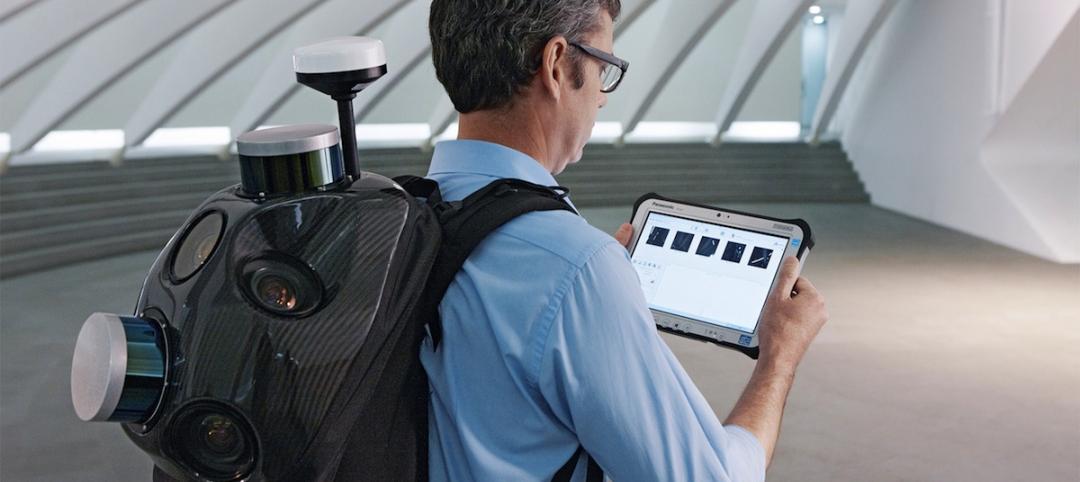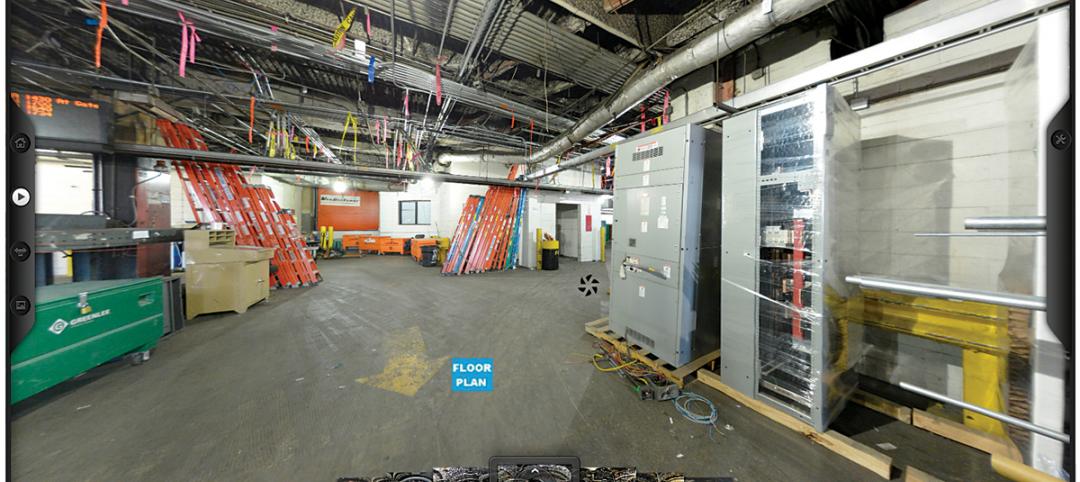Later this month, construction is scheduled to begin on the country’s first business park specifically for unmanned aircraft.
The Associated Press reports that the first order of business for Grand Sky Development Corp., the park’s manager, will be building an eight-foot-high security chain link fence, with barbed wire at the top, to surround 200 acres adjacent to the Grand Forks Air Force Base in North Dakota.
Last week, the 1.2-million-sf Grand Sky aerospace technology park—one of six sites designated by the Federal Aviation Administration for drone testing—was awarded $5.6 million from the state. North Dakota has already invested more than $30 million at this park, which recently added Northrup Grumman as its second anchor tenant, along with General Atomics. North Dakota’s legislature has appropriated $4.4 million for Grand Sky’s future development.
The contract for constructing the fence, which had been planned since 2011, was awarded to Grand Forks-based iconHD, whose parent company is ICON Architectural Group.
Thomas Swoyer, Jr., Grand Sky Development’s president, says the fence is “symbolic,” in that it will “define the park space and give us the ability to control our own access to it.”
General Atomics has signed a tentative agreement to establish an unmanned aerial systems training academy at the park.
In the summer of 2014, FAA announced the selection of the six public entities that would develop unmanned aircraft systems (UAS) research at test sites around the country. One of these is the North Dakota Department of Commerce, which was issued a Certificate of Waiver or Authorization (COA) to begin using a Draganflyer X4ES small UAS at its Northern Plains Unmanned Aircraft Systems Test Site.
Other drone test-site operators include:
• The University of Alaska, which was issued a COA that authorized flights by an Aeryon Scout small UAS for animal surveys at the university’s Pan-Pacific UAS Test Range Complex in Fairbanks. That authorization encompasses test ranges in Hawaii, Oregon, Kansas, and Tennessee.
• The State of Nevada, which was authorized to test an onsite ScanEagle drone at the Desert Rock Airport located in Mercury, Nev. Desert Rock Airport is a private airport owned and operated by the Department of Energy. The ScanEagle flies at or below 3,000 feet.
• Texas A&M University–Corpus Christi plans to develop safety requirement for UAS vehicles. It is authorized to use an AAAI RS-16 UAS, which weights about 85 pounds and has a wingspan of almost 13 feet.
• Griffiss International Airport is authorized to test at a site in Rome, N.Y. One drone is a PrecisionHawk Lancaster Platform UAS that weighs about three pounds and has a wingspan of four feet. Texas-based HoverStat, which develops technology to use small drones for measuring roofs for solar panel installation, reportedly decided to choose Syracuse as a testing location because the Rome site was nearby.
• Virginia Polytechnic Institute is conducting failure mode testing with a Smart Road Flyer, a low cost, low risk multi-rotor UAS being developed to support research in vehicle and highway systems. Other UAS models being tested include an eSPAARO, Aeryon Sky Ranger, MANTRA2, Sig Rascal, and two AVID EDF-8 micro UASs.
At this site, the Mid-Atlantic Aviation Partnership—a part of Greene’s Institute—has spearheaded drone research. The Virginia Tech site is partnered with the University of Maryland and Rutgers University in New Jersey.
Last month, the Federal Aviation Administration waived the authorization process for the agency’s six nationwide drone test sites that had required clearance before moving forward with research exercises at or below 200 feet.
Related Stories
BIM and Information Technology | Jun 5, 2015
Backpack becomes industry first in wearable reality capture
Combining five high-dynamic cameras and a LiDAR profiler, Leica's Pegasus:Backpack creates a 3D view indoors or outdoors for engineering or professional documentation creation.
BIM and Information Technology | Jun 4, 2015
Why reality capture is essential for retrofits
Although we rely upon as-built drawings to help us understand the site for our design, their support is as thin as the paper they are printed on, write CASE's Matthew Nelson and Carrie Schulz.
BIM and Information Technology | Jun 3, 2015
More accurate GPS ready to change the way we shop, interact, and explore
New technology reduces location errors from the size of a car to the size of a nickel—a 100 times increase in accuracy. This is a major technological breakthrough that will affect how we interact with environments, the places we shop, and entertainment venues.
Sponsored | BIM and Information Technology | May 28, 2015
Does BIM Work as a Deliverable?
Sasha Reed sits down with industry professionals at the BIMForum in San Diego to talk about BIM technology.
BIM and Information Technology | May 27, 2015
4 projects honored with AIA TAP Innovation Awards for excellence in BIM and project delivery
Morphosis Architects' Emerson College building in Los Angeles and the University of Delaware’s ISE Lab are among the projects honored by AIA for their use of BIM/VDC tools.
BIM and Information Technology | May 26, 2015
Lego-like model building kit was created by an architect for architects
Arckit, as the system is called, was designed to a 1:48 scale, making it easy to create models accurate to the real-life, physical building projected.
BIM and Information Technology | May 26, 2015
Moore's Law and the future of urban design
SmithGroupJJR's Stephen Conschafter, urban designer and planner, discusses his thoughts on the 50th anniversary of Moore's Law and how technology is transforming urban design.
BIM and Information Technology | May 21, 2015
How AEC firms should approach BIM training
CASE Founding Partner Steve Sanderson talks about the current state of software training in the AEC industry and common pitfalls in AEC training.
BIM and Information Technology | May 13, 2015
5 smart tech trends transforming the job site
RFID labor tracking, 360 cameras, and advanced video tools are among the tech innovations that show promise for the commercial construction industry.
BIM and Information Technology | May 10, 2015
How beacons will change architecture
Indoor positioning is right around the corner. Here is why it matters.

















